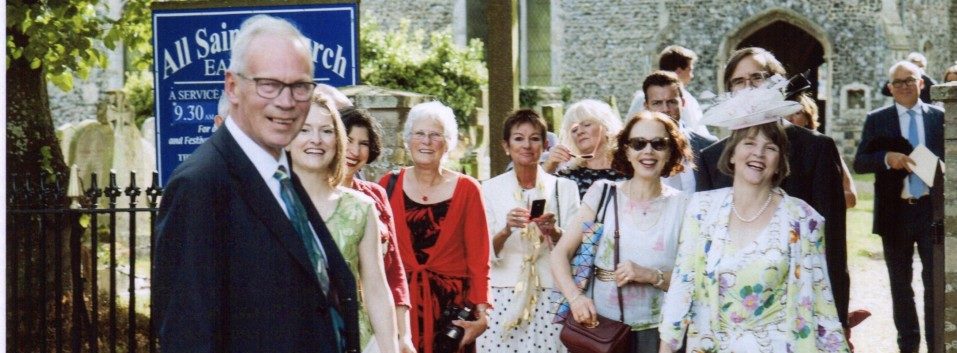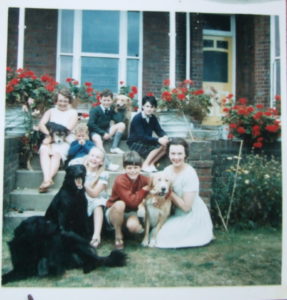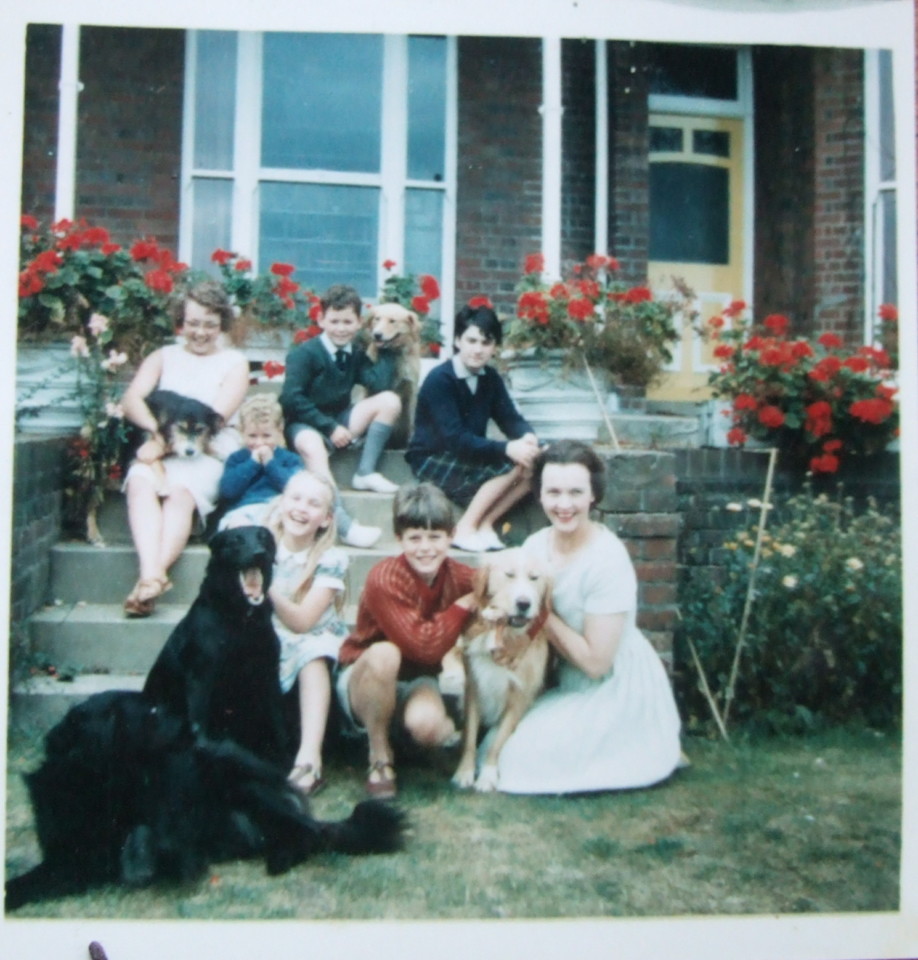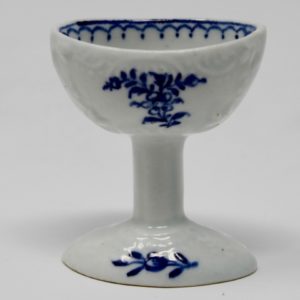Looking at the photo, at the left of the house is the conservatory. I don’t remember it being heated, but there was a grille and pipes underneath, and there was a boiler room in the outhouse next door. I do remember it being warm and steamy, so evidently the terracotta quarry tiles were sprayed with water when it was sunny. There was a plumbago and a nectarine tree on the back wall – you couldn’t buy nectarines in the greengrocers back in the sixties, only peaches, so these were a great treat. The plumbago has a pretty, pale blue flower and it’s slightly sticky, so when you walk past, you find you’re covered with flowers.
The rest of the conservator had various plants, the sort you’d expect, and a grapefruit plant in a big pot, that had been grown from seed by my grandfather in the 1940s. It never bore fruit.
From the house, you reached the conservatory from the dining room and it led outside to, on the left, the lawn and on the right, a passage past the kitchen door to the drive. Straight ahead was another path to more greenhouses, which backed on to the garage. That is, one on the back wall of the garage and another on the side wall. A third greenhouse was free-standing. All of them were brickwork to waist level, then wooden-framed glasswork.
The garage was huge. Empty, it would have taken at least three cars side by side and probably four end to end. In fact, comfortably four, because we had two huge freezers. that my parents had brought from the hotel, plus all sorts of tools and equipment, at the sides. Half way back, there was a wooden staircase to the loft. I have no idea what that was originally used for, but there was a pulley system through a doorway at the front, which I never saw in use.
The loft was equipped with benches and vices and a full set of tools and my father, who was quite keen on carpentry, spent quite a lot of time up there when I was a child. At school, we were once asked to write about our parents’ jobs. My parents weren’t employed but, at the time, my father was engaged in constructing wooden troughs for geraniums, so I said as much – “my father builds boxes in the loft” – which led my teacher to think he was a carpenter by trade. My best friend’s father was the school caretaker and carpenter, so this was fine by me.
Random memories of the garage: once, I was in there, casually splitting a garden cane. A whole family of earwigs fell out and I was startled into fear and ran out. Similarly, when I ventured back, I saw a large rat sitting on a step to the loft, and hopping up to the next step. It just jumped on its haunches. I told my parents, who were suitably dismayed, and I guess the rat and its family was dealt with. I also remember, as well as the big commercial freezers, that we had a small freezer for ice creams. We never had puddings or cakes, but ice creams somehow escaped my mother’s embargo on sweets and it was not unknown for me to help myself from the plentiful supply. If ever I’d been told not to, I’d have stopped, but it was never mentioned. I have no idea whether I came under suspicion or whether everyone helped themselves, so my raids were unnoticed.
Still looking at the photo but out of sight, there were some outbuildings on the extreme left, left of the garage. Stuff was in there. I don’t know what. Just to the right was a big manure heap. Between that and the road was the stable and its accompanying building that housed the bins for the horse’s feed.
I should draw up a diagram of all this, innit?



